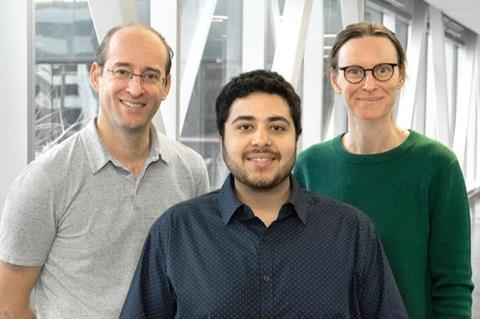The sustained activation of the body’s immune system for people living with HIV leads to chronic inflammation that for some people can cause associated complications such as cardiovascular diseases, osteoporosis or neurocognitive decline.

These health problems, categorized under the term early-onset comorbidities, are linked to the viral reservoirs in which HIV persists.
Gap remains
“These comorbidities arise approximately 15 years earlier in people living with HIV, and this gap has not gotten any narrower over the last decade. Today, there is no specific treatment for HIV to slow down this premature aging,” says Dr. Madeleine Durand, assistant professor at Université de Montréal and researcher at CHUM Research Centre (CRCHUM).
A world-renowned specialist, she worked with Dr. Cécile Tremblay on the first Canadian HIV and Aging Cohort Study (CHACS), which included 850 people living with HIV and 250 control subjects.
This important source of data and specimens is helping several research teams across Canada to understand how these individuals age differently.
Chance encounter
One of her colleagues, Andrés Finzi, researcher at CRCHUM, called on her.
“Andrés is the man who plays with bits of protein,” jokes Madeleine Durand. “She’s not wrong,” he replies, amused.
Their collaboration is largely due to coincidence: a chance encounter at a scientific conference at CHUM in 2021. During the lunch that followed, they devised some research hypotheses. One of them was fruitful.
In a study published by The Journal of Infectious Diseases, whose primary author, Mehdi Benlarbi, is doing his doctorate in Andrés Finzi’s lab, scientists demonstrate that there is a link between inflammation in people living with HIV and the level of protein gp120 in the blood. This molecule makes up a part of the entry “key” that the virus uses to infect human cells.
Acting as toxin
“Even when the viral load is undetectable, we were able to detect this molecule in the blood of one in three infected people. We’re showing that it acts as a toxin and is associated to chronic inflammation leading to comorbidities,” explains Andrés Finzi, professor at Université de Montréal and chair holder of the Canada Research Chair in Retroviral Entry.
To achieve these results, the researcher’s team measured the level of gp120 in the plasma of 386 people from the CHACS cohort led by Dr. Durand. These individuals are over 40-year-old, have been living with HIV in average for 16 years, receive antiretroviral therapy and have an undetectable viral load.
“We’ve managed to counteract the harmful effects of gp120 in vitro by using Fostemsavir, a drug only used by people who are resistant to traditional anti-HIV treatments and whose viral load is detectable,” says Andrés Finzi.
Clinical trial
Encouraged by the results of this study, Dr. Madeleine Durand and Andrés Finzi are setting up a randomized, double-blind clinical trial to determine if targeting the gp120 would decrease inflammation, thereby reducing the risk of early-onset comorbidities.
At this stage, Durand and Finzi have been able to rely on financial support from the Canadian Institutes of Health Research, from the CIHR Canadian HIV Trials Network and from the Fonds de recherche du Québec—Santé to allow them to set up their clinical trial.
“In our multicentre trial that will last two years, we’re going to concretely examine if adding Fostemsavir to existing antiretroviral therapy treatments leads to a reduction in cardiovascular diseases. This will be determined by the change in the volume of atherosclerosis in coronary arteries between the end and the start of the study, measured by cardiac CT scans,” explains Dr. Durand.
Underrepresented in trials
The clinical trial is set to start in September 2024. Approximately 200 individuals will be recruited based on the same criteria as those in the CHACS cohort. The goal is for 50% of the recruits to be women.
Women living with HIV represent 23% of people affected in Canada and form the second fastest-growing group, after Indigenous people. However, women are systematically underrepresented in HIV trials.
“If our trial proves to be conclusive, there would be a paradigm shift in current treatment. Our personalized approach to medicine, which includes optimizing antiretroviral therapy in the many people for whom gp120 is detectable, could relieve the burden of their comorbidities and improve their quality of life,” reports Dr. Durand.
According to the World Health Organization, more than 39 million people were living with HIV at the end of 2022.







No comments yet